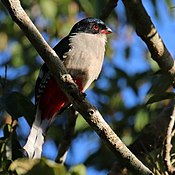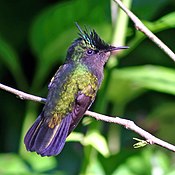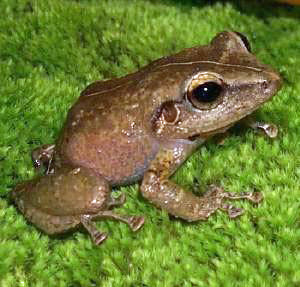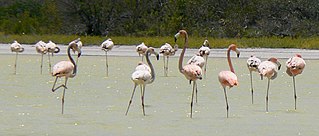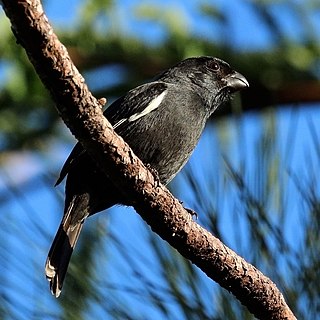Patterns of endemism
This region is notable not just for the high number of endemic species, but for endemism in higher-level taxonomic groupings too. This article is one of a series providing information about endemism among birds in the world's various zoogeographic zones. For an overview of this subject see Endemism in birds.
Family-level endemism
The following families are endemic to the region:
- Palmchat, a passerine family (Dulidae), containing a single species found only on Hispaniola.
- the todies, a family (Todidae) with five species, found only on the Greater Antilles.
- the Cuban warblers, a passerine family (Teretistridae), containing two species on Cuba
- the Hispaniolan tanagers, Phaenicophilidae, a passerine family, containing 4 species in 3 genera on Hispaniola
- the Puerto Rican tanager, a passerine family (Nesospingidae), containing a single species found only on Puerto Rico
- the chat-tanagers (Calyptophilidae) a passerine family, containing 2 species found only on Hispaniola
- the spindalises, a passerine family (Spindalidae), with 4 species found only on the Greater Antilles and nearby islands
Genus-level endemism
In addition to genera in the families above, the following genera are endemic to the region:
- Riccordia , with six species, the blue-headed hummingbird, Puerto Rican emerald, Cuban emerald, Hispaniolan emerald, and the extinct Brace's emerald & Gould's emerald
- Margarops, with one species, the pearly-eyed thrasher
- Priotelus , with two species, the Cuban trogon and Hispaniolan trogon
- Melopyrrha , with four species, the Puerto Rican bullfinch, Cuban bullfinch, Greater Antillean bullfinch, and the extinct St. Kitts bullfinch
Six genera found only on Hispaniola:
- Nesoctites, with one species, the Antillean piculet (also monotypic within the subfamily)
- Dulus, with only one species, the palmchat (also monotypic within the family)
- Phaenicophilus, with two species, the black-crowned tanager and grey-crowned tanager
- Xenoligea, with one species, the white-winged warbler
- Microligea, with one species, the green-tailed warbler
- Calyptophilus, with two species, the western chat-tanager and eastern chat-tanager
Five genera found only on Jamaica:
- Trochilus , with two species, red-billed and black-billed streamertails
- Loxipasser, with one species, the yellow-shouldered grassquit
- Euneornis, with one species, the orangequit
- Nesopsar, with one species, the Jamaican blackbird
Six genera found only on Cuba:
- Ferminia, a genus with only one species, the Zapata wren
- Cyanolimnas, with one species, the Zapata rail
- Margarobyas, with one species, the bare-legged owl
- Starnoenas, with one species, the blue-headed quail-dove (depending on classification, the genus may also be monotypic to the subfamily level)
- Torreornis, with one species, the Zapata sparrow
- Xiphidiopicus, with one species, the Cuban green woodpecker
One genus found only on Puerto Rico:
- Gymnasio, with one species, the Puerto Rican owl (formerly also found in the Virgin Islands, but now likely extirpated there)
One genus found only on the Bahamas:
- Nesophlox , with two species, the Bahama woodstar and Inagua woodstar
The following genera are confined to the Lesser Antilles:
- Ramphocinclus, with a single species, the white-breasted thrasher
- Cinclocerthia , with two species, the gray trembler and the brown trembler
- Allenia, with one species, the scaly-breasted thrasher
- Loxigilla, with two species, the Lesser Antillean bullfinch and the Barbados bullfinch
In addition in the following genera, a high proportions of the member species are endemic to the west Indies:


